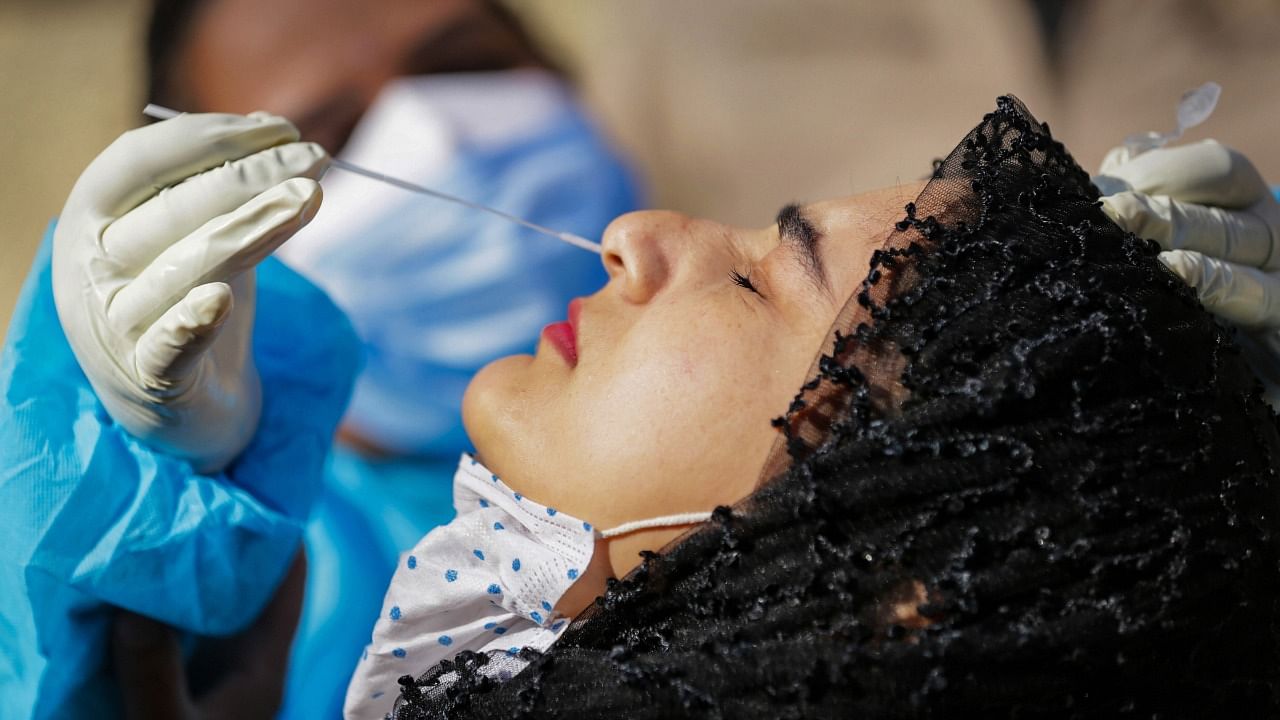
A hybrid model of testing, involving a combination of available testing methods, can increase the number of people tested for coronavirus and also sharpen the accuracy by administering selective tests based on symptoms, according to a study.
As Omicron is detected in more states in India and around the world, there is a growing need to change the manner in which the country conducts Covid-19 tests to detect the highly-mutated variant. India has so far traced 126 cases where individuals have tested positive for the new variant and is likely to find more in the coming weeks.
According to a report by IndiaSpend, the country will now have to adopt a hybrid testing technique – deploying both Rapid Antigen Testing (RAT) and real-time Reverse Transcriptase-Polymerase Chain Reaction (RT-PCR) if it is to swiftly detect Omicron.
It compared the mixing of RAT and RT-PCR tests with three other methods – Baseline, 70 per cent RT-PCR and improved RAT+RT-PCR.
While baseline looks at administering an RT-PCR test to 25 per cent of all suspects and a fifth of symptomatic RAT-negatives, the 70 per cent RT-PCR method involves administering an RT-PCR test to 7 out of 10 people, while offering the remaining three a RAT test. Improved RAT+RT-PCR involves offering an RAT test with higher sensitivity.
Data showed that six times as many people can be tested using a hybrid method as compared to a baseline. Similarly, while it may have the lowest sensitivity among all four methods, over five times as many people can be tested combining RAT and RT-PCR tests. RAT tests also cost lower than RT-PCR.
"In a hotspot, RATs help you eliminate those who don't have the virus and quickly detect those who do," Gautam Menon, a professor of physics and biology at Ashoka University told the publication.
The publication quoted a study that found it was "cheaper, faster and effective if all Covid-19 suspects were first given the RAT test and only those who were symptomatic and still tested negative on the RAT were given the RT-PCR."
Should a third wave arise, RATs, which have a lower or faster turnover time of just 30 minutes — as opposed to a range of three to six hours for an RT-PCR test — will help in quicker detection of cases.
There are numerous advantages to deploying a hybrid system, the study shows.
Despite its lower sensitivity (how likely it is to pick up a positive sample), the government may be able to control a possible third wave by combining RAT tests with RT-PCR.
Check out latest DH videos here